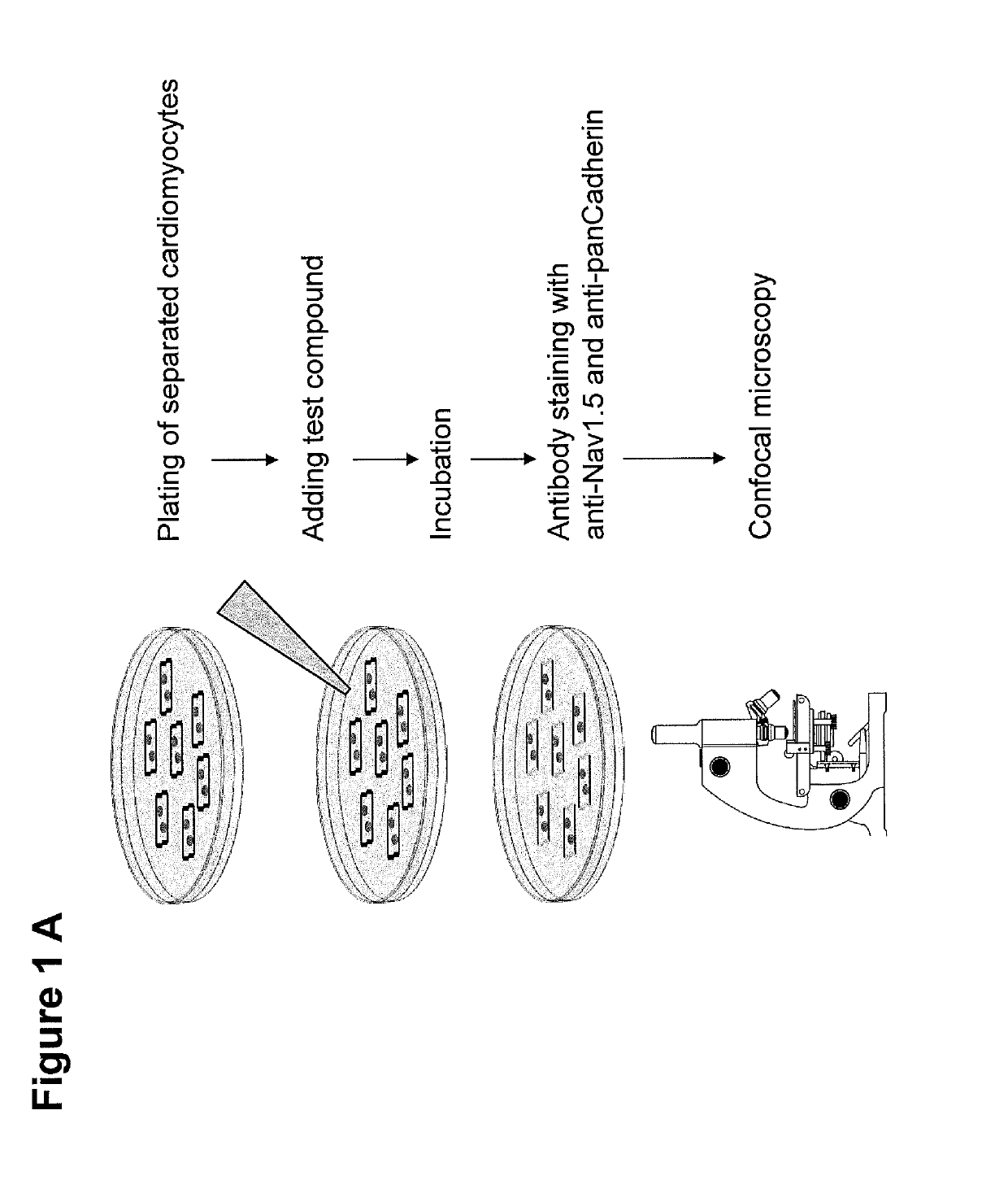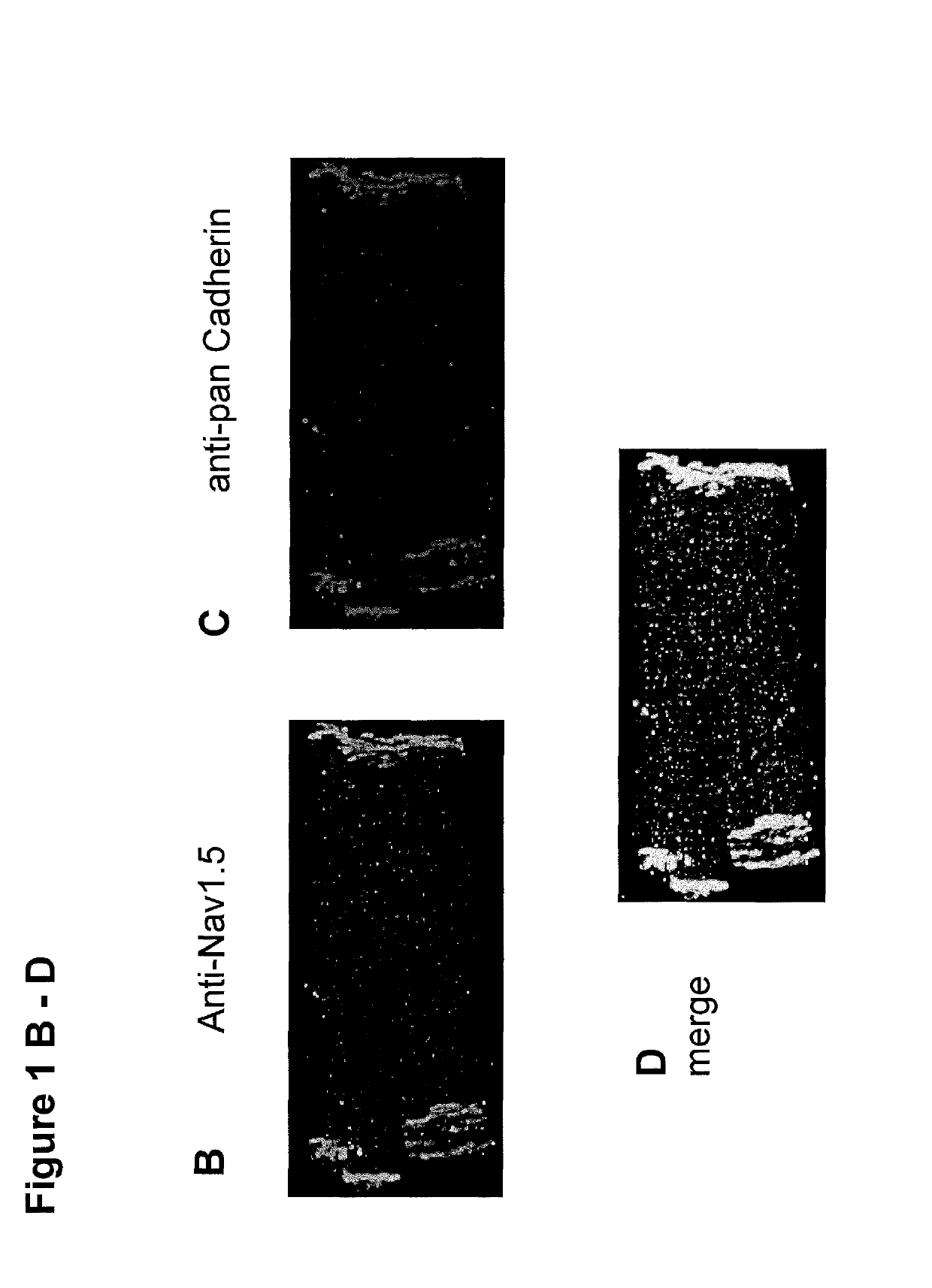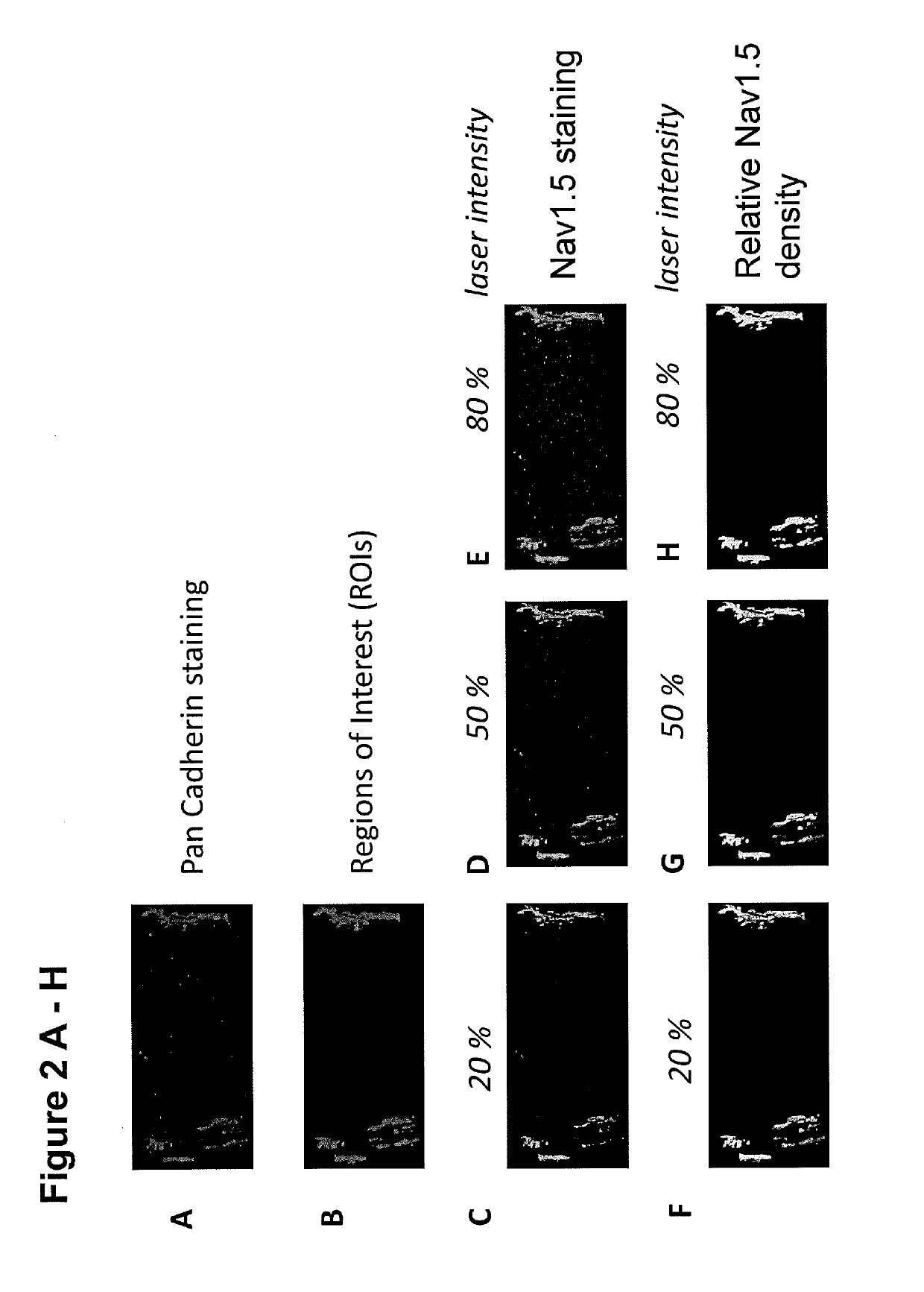Method and kit for assessment of sodium channel-related anti- or pro-arrhythmic potential of compounds
a technology of anti-or-pro-arrhythmic potential and sodium channel, which is applied in the direction of instruments, material analysis, organic active ingredients, etc., can solve problems such as drug withdrawal from the mark
- Summary
- Abstract
- Description
- Claims
- Application Information
AI Technical Summary
Benefits of technology
Problems solved by technology
Method used
Image
Examples
example 1
1. Material & Methods
1.1 Mouse Adult Cardiomyocyte Isolation
[0195]Cardiomyocytes isolation was performed largely according to Liao & Jain (2007). Briefly, the mice were injected with 200 IU heparin i.p. prior to sacrifice. The thoracic chamber was opened and a cannula with perfusion solution was inserted from the atria. The heart was harvested and perfused in the Langendorff system with Perfusion Buffer at 37° C. for 5 min, followed by Digestion Buffer until the heart muscle was pale and some signs of extracellular matrix dissociation appeared. The heart was perfused for additional 5 min with Perfusion Buffer to stop the dissociation. The cardiomyocytes were mechanically dissociated in TB-A and then plated on ECM-coated (Sigma cat. no. E-1270) petri dish (Zell-Kontakt cat. no. 5160-30). The extracellular calcium concentration was increased gradually in three consecutive steps from 0 mM (in TB-A) to 0.06 mM, 0.24 mM and 1.2 mM every 5 min. The cells were washed once with TB-B, transf...
PUM
| Property | Measurement | Unit |
|---|---|---|
| time | aaaaa | aaaaa |
| area | aaaaa | aaaaa |
| density | aaaaa | aaaaa |
Abstract
Description
Claims
Application Information
 Login to View More
Login to View More - R&D
- Intellectual Property
- Life Sciences
- Materials
- Tech Scout
- Unparalleled Data Quality
- Higher Quality Content
- 60% Fewer Hallucinations
Browse by: Latest US Patents, China's latest patents, Technical Efficacy Thesaurus, Application Domain, Technology Topic, Popular Technical Reports.
© 2025 PatSnap. All rights reserved.Legal|Privacy policy|Modern Slavery Act Transparency Statement|Sitemap|About US| Contact US: help@patsnap.com



